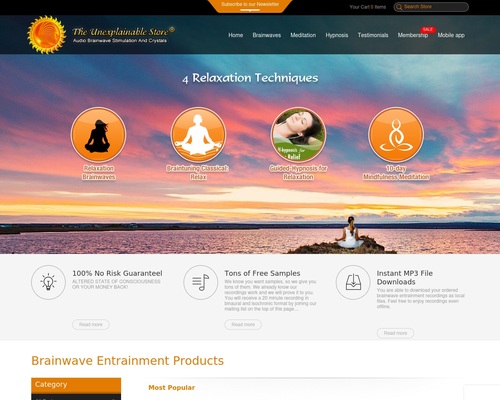
[ad_1]
Introduction? Check. Scope of work? Check. Creative process? Check. Timeline, milestones, and expectations? Check. Payment terms? Check. Signature line? Check. These are all the basics of putting together freelance contracts.
Putting together a basic freelance contract for a website project isn’t difficult as long as you’re only ever building small, basic websites for small amounts of money. But when you’re investing many hours into a project, the fees you charge increase, and the stakes become much higher, it becomes more important to have a solid contract in place to protect you and put your clients at ease.
If you’re like many freelance designers and developers, you may not know what terms to add to your contract until it’s too late and you’ve already been burned. That’s why I include an entire weeks training and materials to creating freelance contracts and change orders in my client management course.
While not an exhaustive list of what to include in a web design client contract, here is a list of contract terms that should be in every freelance contract you send.
List of Terms to Include in Freelance Contracts
What’s Not Included
In addition to what is included in the scope of work, you should include a section that outlines what is not included for the fee you are charging. This will help avoid situations where the client assumes you’re doing certain tasks for them and gets angry when you tell them that those tasks are not included.
Here are three examples:
Example #1
- Included: Adding and styling the provided content in the website, making one round of minor content changes to catch last minute typos or grammatical errors.
- Not Included: Typesetting or typing up content provided in print format, replacing large chunks of content or entire pages of content.
Example #2
- Included: Adding/embedding the client’s course videos to their membership site.
- Not Included: Uploading all of the videos to Vimeo pro, adding the custom splash images, and configuring the settings for each video.
Example #3
- Included: Integrating a MailChimp email marketing opt-in with their website and setting up the double opt-in confirmation page and thank you/download page.
- Not Included: Designing a custom email marketing template and creating/configuring email automation and autoresponders.
Availability
Make it very clear when you are available when you’re not available, and how quickly clients can expect a response. Be clear about your availability for phone calls, email, and meetings, and set boundaries for:
- When and how often you check email and respond to messages
- What lead time is required to set a meeting
- How fast turnaround will be on work to be completed and revisions
Consider adding a short clause about social media. Let them know that you use social media for both work and play, and that when you’re on Facebook and Twitter at nights or on the weekends, that doesn’t mean you’re available to them as well.
Third-Parties
It is critical to protect yourself, your deliverables, and your deadlines, from project delays and problems from third parties that you have no control over, like hosting companies, email marketing service providers, the postal service, mail houses, social media sites, plugins, email, domain registrars, Internet service providers, etc.
It is also important to protect your time from the third-party human — i.e. the virtual assistant your client has hired to implement their Infusionsoft campaigns, opt-ins, and other online items. It’s not your job to train their virtual assistant to do the job they were hired for, nor is it your job to fix things they set up incorrectly.
Include a clause that protects you losing hours of your time. Communicate that you are happy to be a resource for their team or virtual assistants, but that training them on a third-party platform, fixing their configuration mistakes on a third-party platform, or providing ongoing email and phone support for work not included in your agreement will require a separate support agreement.
Dormancy
Do you have a plan in place for what happens when a client goes MIA in the middle of a project, fails to communicate what is going on, and stops responding to emails or phone calls?
A dormancy clause addresses what happens when a project falls dormant.
- Outline what length of time must pass before a project is considered dormant.
- List exactly what criteria makes a project considered dormant.
- Note what happens when a project becomes dormant — what action is taken.
- Communicate what must happen to restart the project after it has been deemed dormant. Is there a re-engagement fee? Do certain milestones or deliverables have to be met?
Cancellation
Outline the process a client must use for canceling a project:
- What do they need to do to cancel the contract?
- How much notice do they need to give?
- Do they get a full refund, partial refund, no refund?
- What happens to the work done to that point? Do they get what have been paid for thus far? Do they get nothing?
In addition to communicating what happens when a client wants to cancel a project, it is also a good idea to outline what happens if you want to cancel the project and fire your client. Consider addressing:
- How long does a project need to be dormant before it is considered cancelled? If it is cancelled after falling dormant, are all refunds forfeited?
- What happens when you realize a client simply isn’t a good fit and you want to part ways. Do you refund them 100% and wish them well?
- What if work has already been completed? Do you cut your losses for good will? What stage of the project begets only a partial refund and files for work completed to date?
Revision Policy
Communicate with the client that the design process is an interactive process that that they will have opportunities to provide input, feedback, and revisions. Inform the client:
- How many rounds of revisions are included with the project
- What constitutes a round of revisions
- Who is allowed to make/request revisions
- What happens if they need more revisions than what is included
- What happens if they want to make revisions after providing approval
Website Hosting
Clients who are less technically-savvy don’t always understand how website hosting works or that they even need website hosting. In some cases, clients may assume that because you’re creating the website, you’re also hosting the website.
In your contract, explain:
- What website hosting is, how it works, who is responsible for purchasing website hosting, and what website hosting providers you recommend.
- What is included in taking the website live in the client’s hosting account
- What is not included when dealing with hosting, like other websites in the same account, setting up email addresses, or transferring domain names
Premium Plugins
During your work together, the client may request specific functionality for the website that may require the use of a premium plugin. Be sure to convey who is responsible for purchasing the premium plugin, how the configuration and setup of the plugin will be handled, and when the client may encounter additional fees.
Browser Testing And Compatibility
Browser testing no longer means attempting to make a website look exactly the same in browsers of different capabilities or on devices with different size screens, settings, or resolutions. It does mean ensuring that a person’s experience of a design should be appropriate to the capabilities of a browser or device.
Outline which browsers you test your work against and what happens if the client requires compatibility for outdated or obscure browsers.
Ownership Of Materials
While you are building the website, your client is supplying you with content, which may include text, images, quotes, graphics, charts, audio, video, PDFs, and other materials. Protect yourself by limiting your liability for any content used that was provided by the client. State that all content provided must be owned by the client or the client must have permission to use the materials.
Ownership Of Work
When the project is over and the website has been delivered, who owns the work? Who retains the copyright for the design? Outline the exact terms of ownership for the work completed.
Portfolio Inclusion
Let the client know that you love to show off your work and your clients, and that you intend on showcasing the website completed together in your portfolio. Also include use of the website in blog posts, case studies, and other marketing materials to cover your future bases.
Location Of Legal Filings And Proceedings
Of course projects always begin with the best intentions and no service provider ever wants to see a dispute arise that requires legal proceedings or court appearances; if it does, you need to be ready. Include verbiage in your contract that states the place any legal filings must be made and any court proceedings must be held.
I work with clients across the globe, which means if something terrible goes down, I could be sued by someone in another state, in another country, or on another continent. I don’t want to be forced to spend my own money to fly to another state, country, or continent to dispute a claim, so my freelance contracts are legal documents under the exclusive jurisdiction of the State of California, Placer County Courts.
Warranty Of Work
Your client may not understand the difference between warranty work and website support. In your freelance contracts, outline what warranty work is, how long it is good for, what the warranty includes, and what is not considered warranty work.
Including a warranty is a great way to provide your clients extra peace of mind when investing with your company. It also often leads to additional work in the future because clients will reach out with an issue to see if it’s covered under warranty, and if it isn’t you get to have a conversation about how you can help.
Support And Maintenance
I highly recommend upselling ongoing website support services to every website client. Website support is not only a fantastic way to help your clients protect and safeguard the website they just invested a lot of time, effort, and money in, but to keep it performing as well as it did the day to turned it over to them.
In your freelance contracts, be sure to outline what website support is included (if any), what happens if they need additional support with their website in the future, and what support services you provide.
Conclusion
Designers and developers tend to believe every new client will be a great client because they truly want every project to be an incredible experience for themselves as well as their clients. Unfortunately, that can lead to a general laziness about freelance contracts and potential trouble down the road, because not all clients are great clients.
- If every client was a great client freelancers and agencies wouldn’t need freelance contracts.
- If every engagement went smoothly clients wouldn’t have horror stories about past designers and developers and skepticism about future providers.
- If nothing ever went wrong, the website Clients From Hell wouldn’t exist.
Whether you’re a freelance designer or developer, or you run a creative agency, be smart about delivering clients services and use freelance contracts designed to remove confusion, minimize misunderstandings, and eliminate assumptions, while protecting your time, sanity, and bottom line. Make sure you spend time creating freelance contracts that cover your bases.
Ready to Learn More?
Get more content just like this by subscribing to our Blog.
[ad_2]
Source link






